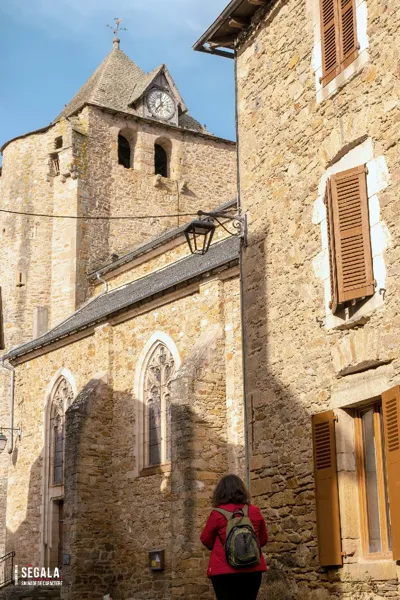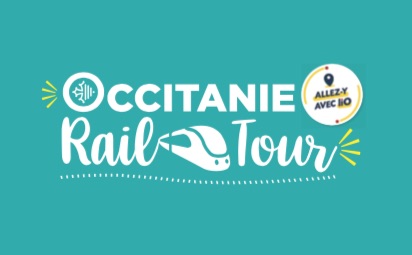Visitez Cassagnes-Bégonhès
CASSAGNES-BEGONHES , Aveyron – Cultural heritage
About
Baladez-vous autour du plan d’eau du Glandou, le long du Céor, profitez des tables de pique-nique et amusez vos enfants avec la tyrolienne ou le jeu de piste : tout est en accès libre !
>>>> Utilisez le plan pour vous repérer (voir image).
Le point étymologie :
Le nom de Cassagnes dérive du mot gaulois cassanus qui signifie “chêne”. Bégonhès vient du nom de la famille De Bégon dont un représentant se vit attribuer la viguerie* carolingienne dont Cassagnes était le chef-lieu.
*Initialement siège d’une juridiction civile et criminelle rendue au nom du comte ou du vicomte.
Ses origines :
Le château élevé sur le promontoire rocheux au-dessus de la rivière Céor vers l’an mille est à l’origine de l’établissement de la viguerie en ce lieu.
Avec le rattachement en 1271 du Rouergue à la Couronne, Cassagnes devint la propriété du roi de France, Philippe III. Il lui accorda, par la charte de 1282, les privilèges des villes franches, qu’il réservait aux bastides. C’est ainsi que le bourg fut rebaptisé “Cassagnes-Royaux” et devint l’une des quatre châtellenies du Rouergue : un capitaine ou châtelain à la tête d’une garnison gardait le château et assurait l’ordre de la région.
Des remparts et des fossés entouraient le village dans lequel on entrait par deux portes : la porte Notre-Dame et la porte Ste-Catherine.
Son économie était alors basée principalement sur d’importantes foires et sur la tannerie.
Cassagnes fut occupé à plusieurs reprises à partir de 1562 par les partisans des huguenots (protestants calvinistes) qui finirent par incendier le village en 1584 détruisant le château et un très grand nombre de maisons. Seul le clocher fut épargné.
A propos des tanneurs :
Plusieurs moulins s’étaient établis très tôt au bord du Céor, puis ce fut le tour des tanneurs : leur travail commençait dans la rivière et se poursuivait dans des calquières(ateliers cabanes) où se trouvaient des fosses pour le trempage des peaux et un étage semi-ouvert pour le séchage. Leur nombre fut très important aux XVème et XVIème siècles. Une grande inondation en août 1684 qui détruisit les moulins et 24 calquières, marqua la fin de cet artisanat qui avait créé la richesse de Cassagnes.
Quelques familles de coyratiers (tanneurs) devinrent de grands marchands qui n’hésitaient pas à se rendre à de grandes foires dans de très lointaines régions. Les mules partaient chargées de peaux et de tous les produits en cuir façonnés par un grand nombre d’artisans travaillant dans leurs échoppes au bas des maisons. La rue des Calquières est le dernier indice qui nous relie à cette histoire.
>>>> Essayez en famille le jeu de piste “Mystère à Cassagnes” et aidez le fils du tanneur à retrouver les peaux qu’il s’est fait voler !
Focus sur l’église et son clocher :
En 1471, après l’invasion anglaise, l’évêque de Rodez décida de construire un clocher fortifié en y rattachant une nouvelle église (la dernière ayant été pillée). Adossé à la petite église du XIIIème siècle, il s’intégrait avec ses créneaux dans la ceinture des remparts et servait de poste de surveillance du haut de ses 44 mètres.
Le bas, qui a longtemps servi de prison, a été récemment aménagé et permet d’accéder aux escaliers du clocher.
Au deuxième étage, devenu le fond de l’église, on peut admirer une remarquable voûte à tiercerons, une rosace à douze lobes et deux fenêtres de style flamboyant. Au-dessus se trouve la salle de l’horloge.
Spoken languages : French
Allez-y en liO
En car : A moins de 10 mn à pied de l’arrêt CASSAGNES-BÉGONHÈS – Bourg !
Cet arrêt est situé sur les lignes : REQUISTA -RODEZ
Environ 2 min (187 m).
Calculez votre itinéraire pour votre voyage en Occitanie avec les trains ou les cars LiO
Calcul itinéraires et recherche horaires
Bon plan
Pass Occitanie Rail Tour
Choisissez le pass Occitanie Rail Tour et son tarif préférentiel pour voyager avec liO à travers la région.
www.occitanie-rail-tour.com










